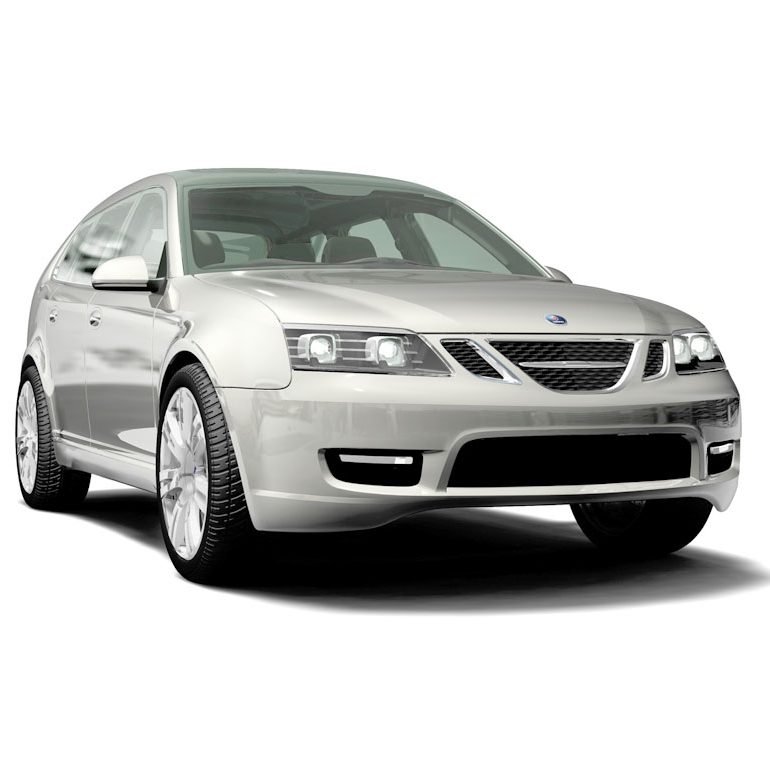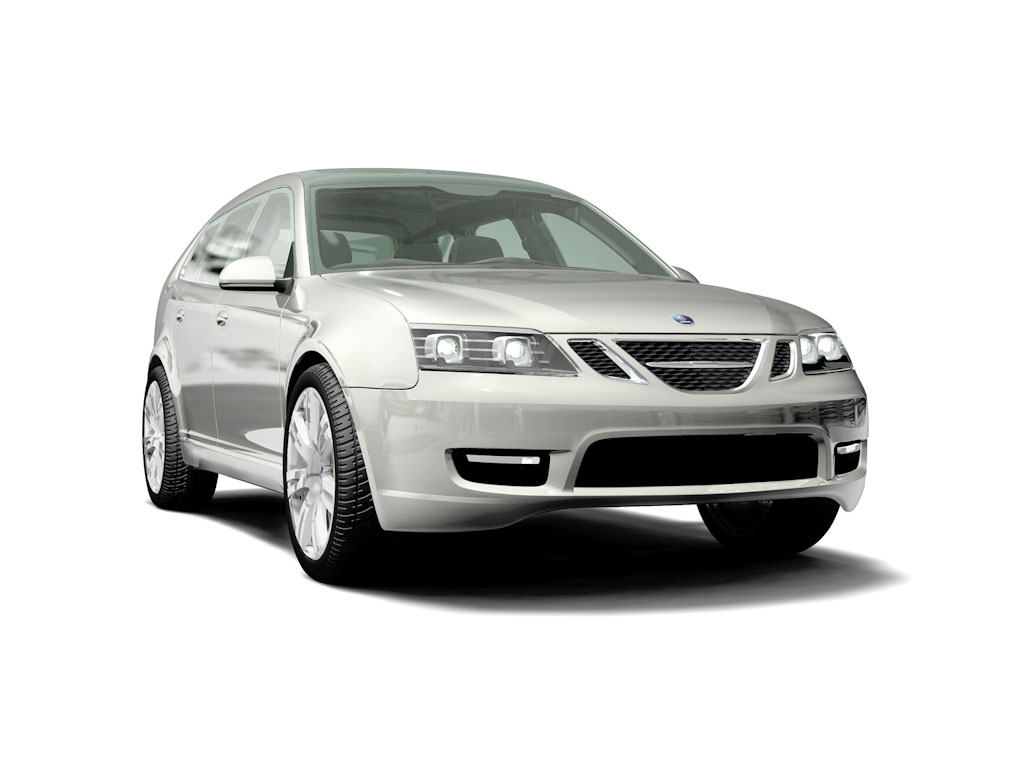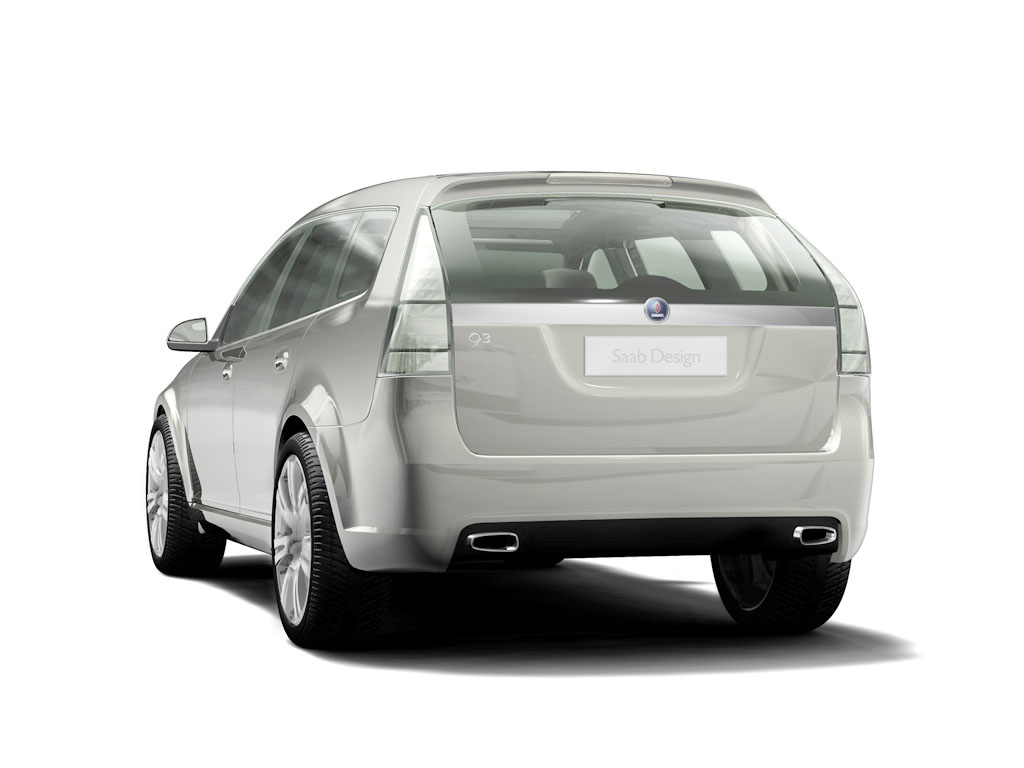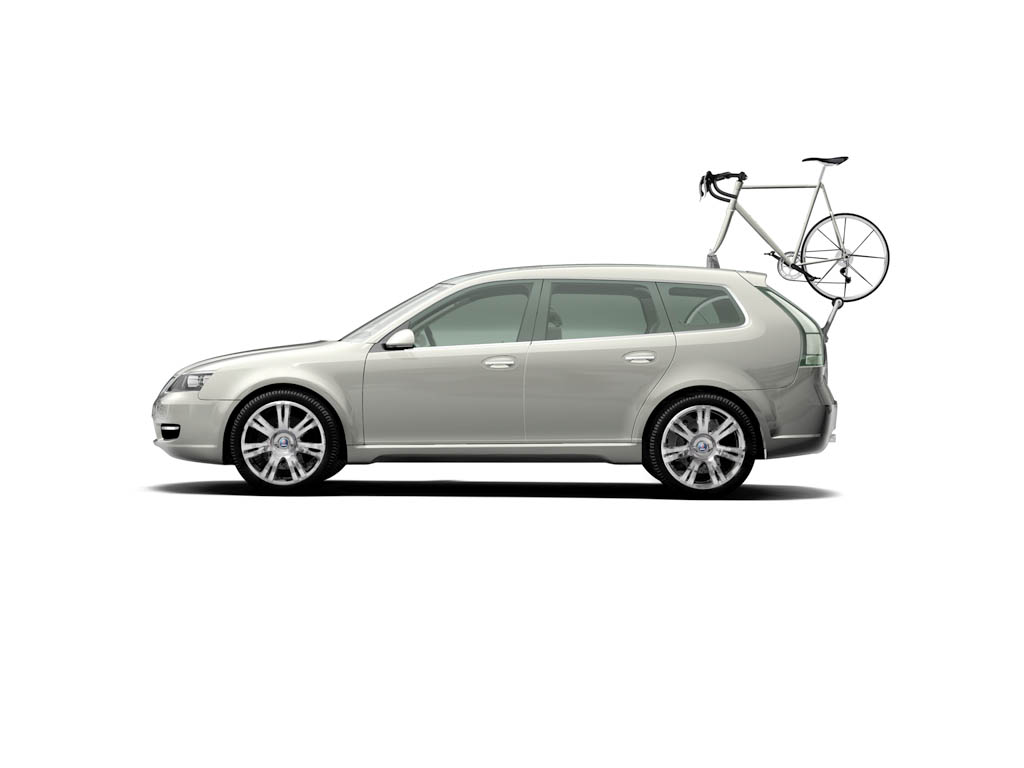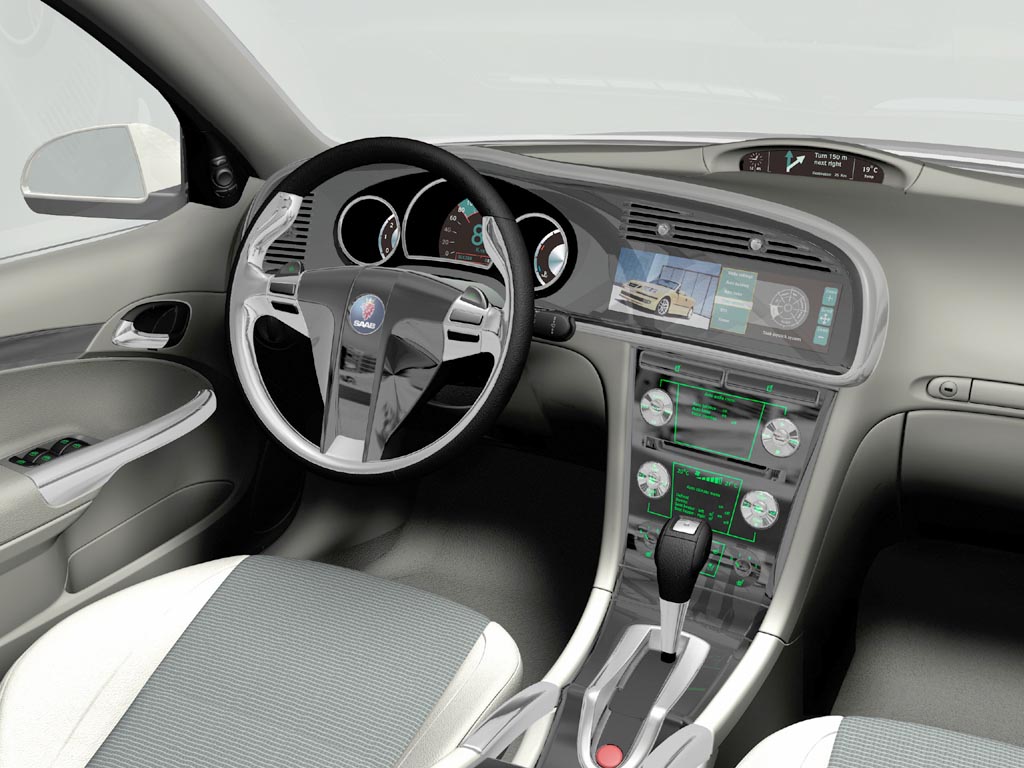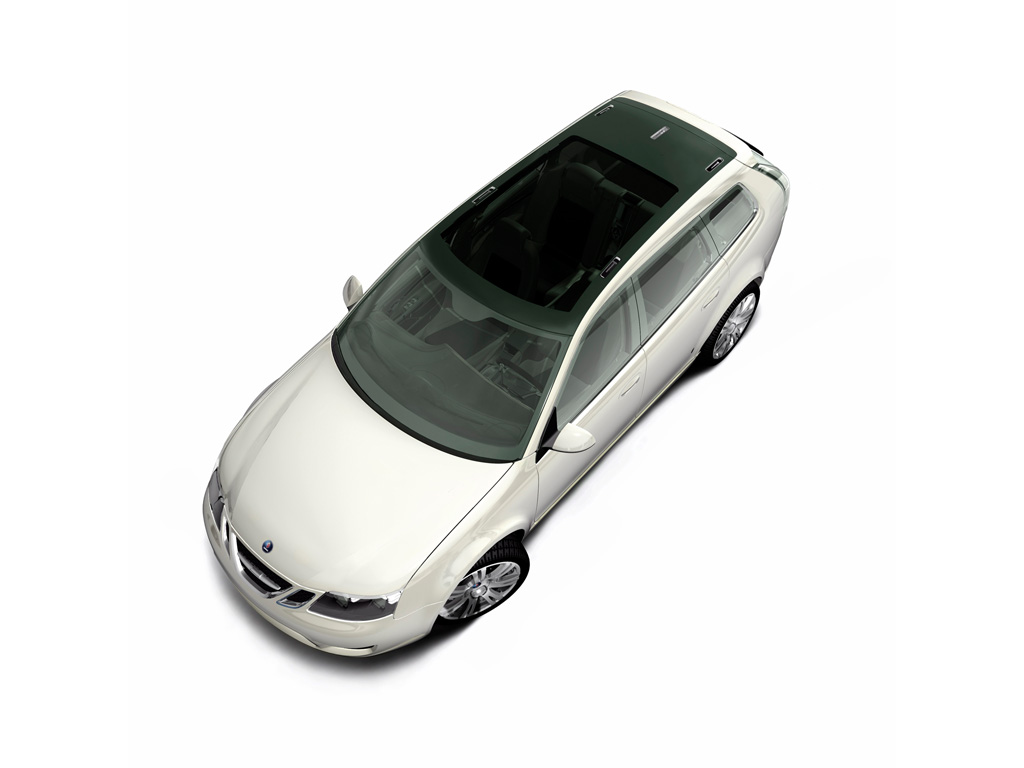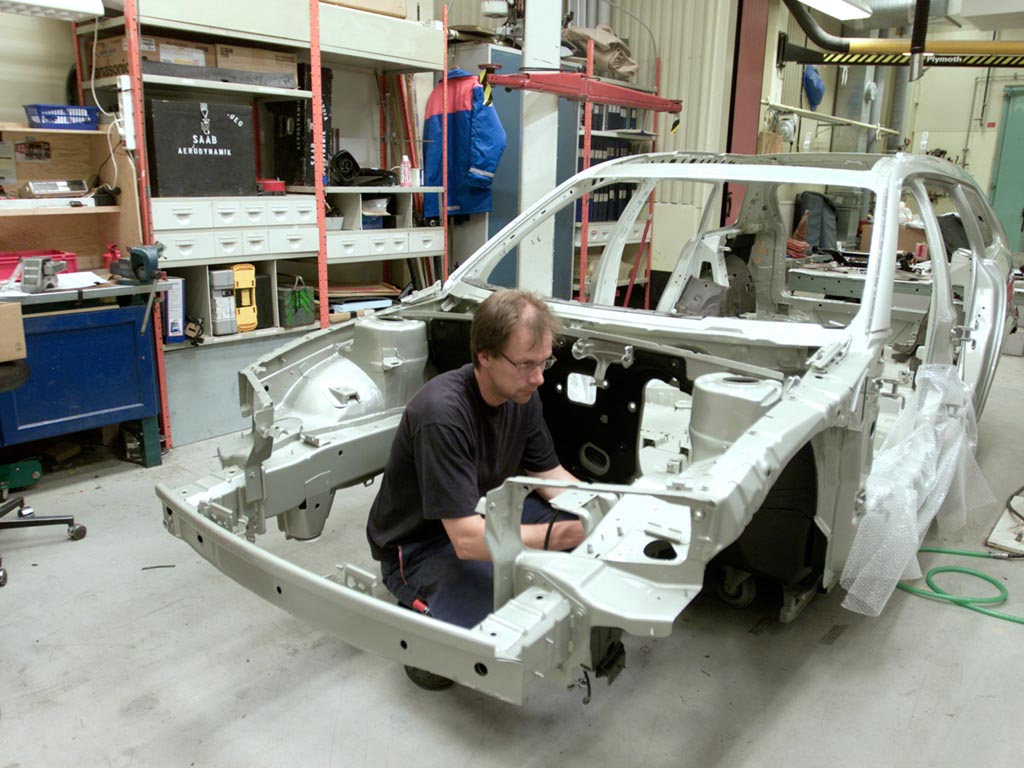2003 Saab 9-3 Hatch Concept
Saab declares its intention to enter a new market segment with the unveiling of its Saab 9-3 Sport-Hatch Concept at this year’s Frankfurt Motor Show.
The distinctive, five-door, four-seater format offers sporty, driver-focused performance and innovative load-carrying features, while challenging the traditional distinction between a hatchback and wagon. It is designed for customers with active, outdoor lifestyles who seek a sporty and rewarding driving experience that also delivers the versatility they need.
Powered by a 250 bhp, 2.0-liter turbo engine with Saab Sentronic automatic transmission and a lowered, sports chassis sitting on 20-inch wheels, the 9-3 Sport Hatch Concept promises sharp performance to match its eye-catching looks.
It is intended to take Saab into the mid-size wagon segment for the first time by offering a distinctive alternative choice, with hatchback-like proportions that are reminiscent of the shape of its classic Saab 900 forebears.
Progressive Design
The design language of the Saab 9-3 Sport-Hatch Concept draws its inspiration from both the 9-3X ‘cross-over coupe’ concept and the 9-3 Sport Sedan. For the exterior, these themes are synthesized with an economy of line and form to communicate impressions of strength, muscularity and power, all key brand drivers.
The four-seat interior is a development of the 9-3X concept’s layout, with innovative driver displays and a bold central motif that complements the external glass roof. These features are combined with core elements of the 9-3 Sport Sedan’s cabin to create a sporty and cleanly-executed interior.
The dynamic visual appeal of the car is generated by its tautly contained, almost compact, proportions. All external glazing, with the exception of the headlamp units, is presented in dark green tinted glass – a theme that is uniquely carried into the interior.
From outside to inside
The best of Scandinavian design should have simplicity and consistency, with rounded and clean lines contributing to a sense of ‘oneness’. For Saab this means that car design must work in a ‘holistic’ way, introducing exterior design principles to the inside of the car. There should be no straight lines or mismatches in shape, line or form in the interior of a Saab car. The overall design strategy should echo the fluid, soft lines and contours of the exterior bodywork.
The center stack has a particularly neat appearance, without the myriad of buttons and controls normally associated with audio and climate control settings. In addition to a CD slot, there are just four large controls for air conditioning, ‘infotainment’ and comfort functions shared by the driver and front passenger.
Essential driver information is presented through three portholes in the surface. The large central one contains the speedometer and a wide range of programmable systems ‘status checks’, graphically displayed. These include, for example, tire pressures, seat-belt usage, light bulb status, door closures and even a front and rear outside clearance check for close maneuvering.
The glass roof adds a light and airy counterpoint to the close-coupled interior ambience, again echoing a theme from the 9-3X concept, as well as providing panoramic viewing for the occupants.
The rest of the interior resembles the design of the 9-3 Sport Sedan. The leather upholstery is presented throughout in beige, further highlighting the light and airy feel. All passenger seat-backs can fold forwards, completely flat, into their fixed squabs, the two in the rear folding to the same level as the rear cargo deck. The door trim inserts and handles are finished in brushed aluminum.
Chassis
In keeping with Saab’s tradition for sporty and easily accessible engine performance, the 9-3 Sport-Hatch Concept is powered by a highly-developed 250 bhp (184 kW) version of the 2.0-liter turbo unit introduced in the 9-3 Sport Sedan, now with direct injection, variable valve timing and a twin-scroll turbocharger. It is mated to a ‘Sentronic +2’ automatic transmission, which includes manual gear selection via steering wheel buttons and two intermediate ratios on kick-down.
The front-wheel-drive format incorporates a multi-link rear suspension and Saab ReAxs, a passive rear-wheel steer characteristic designed to increase driver involvement by preventing excessive understeer and improving ‘turn-in’.
The abilities of the powertrain and chassis are focused on delivering a level of performance and driving satisfaction that belies the 9-3 Sport-Hatch Concept’s more functional abilities.
Engine
Saab is recognized as a ‘Center of Expertise’ within General Motors for turbocharging and the 9-3 Sport-Hatch Concept’s all-aluminum engine, based on the L850 series, takes this technology to a new level.
The introduction of direct injection improves combustion and fuel consumption. In this application, it also raises low-end torque by about 15 per cent up to 1,500 rpm.
Breathing is improved by the use of Continuously Variable Cam Phasers (CVCP) to control both inlet and exhaust valves. Apart from improving fuel consumption on full and part-load throttle by up to five per cent, CVCP also further contributes to better low-end torque.
Another ‘first’ for Saab is the use of a twin-scroll turbocharger. This more effectively harnesses exhaust pulse energy by separating the gas flow into two channels, instead of one, which drive the turbine wheel, now made of a titanium-aluminum alloy turbine for low-inertia. The end result is an improved throttle response which, together with better low-end flexibility, gives the Saab 9-3 Sport-Hatch Concept driver a particularly ‘user-friendly’ control of the strong performance on tap.
In this form, the engine retains its maintenance-free chain-driven camshafts, counter-rotating balancer shafts, dual mass flywheel and integrated oil cooler. As in the Sport Sedan, the turbocharger is located in-board behind the engine. For the 9-3 Sport-Hatch Concept, a water-cooled turbocharger, operating at 1.2 bar, is fitted.
In Detail
| submitted by | Richard Owen |
| engine | GM L850 All Aluminum Inline -4 |
| position | Front Transverse |
| aspiration | Twin scroll |
| valvetrain | 4 Valves per Cyl w/Varibale Valve Timing |
| fuel feed | Direct Injection |
| displacement | 2000 cc / 122.0 in³ |
| power | 186.4 kw / 250 bhp @ 5500 rpm |
| specific output | 125.0 bhp per litre |
| bhp/weight | 158.23 bhp per tonne |
| torque | 350 nm / 258.1 ft lbs @ 2500 rpm |
| front brakes | Vented Discs w/4-Piston Calipers |
| f brake size | x 378 mm / x 14.9 in |
| rear brakes | Vented Discs w/4-Piston Calipers |
| r brake size | x 328 mm / x 12.9 in |
| front wheels | F 50.8 x 21.6 cm / 20 x 8.5 in |
| rear wheels | R 50.8 x 21.6 cm / 20 x 8.5 in |
| steering | Rack & Pinion w/Power Assist |
| f suspension | McPherson Struts w/Lower A-Arms, Gas-Filled Shocks, Coil Springs, Anti-Roll Bar |
| r suspension | 4-Link Multi-Link w/w/Lower A-Arms, Gas-Filled Shocks, Coil Springs, Anti-Roll Bar |
| curb weight | 1580 kg / 3483 lbs |
| wheelbase | 2700 mm / 106.3 in |
| front track | 1580 mm / 62.2 in |
| rear track | 1580 mm / 62.2 in |
| length | 4659 mm / 183.4 in |
| width | 1801 mm / 70.9 in |
| height | 1547 mm / 60.9 in |
| transmission | 5-Speed Auto w/Sentronic Selection |
| gear ratios | :1 |
| top speed | ~250 kph / 155.3 mph |
| 0 – 60 mph | ~7.0 seconds |


